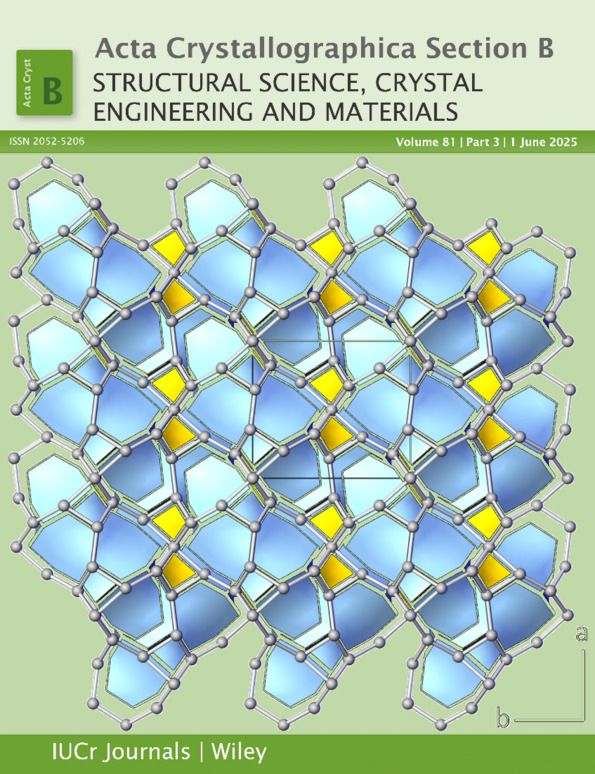Structures of phosphonitrides in light of the extended Zintl–Klemm concept
Abstract
The extended Zintl–Klemm concept (EZKC) is applied to explain the crystalline structures of phosphonitrides (also known as nitridophosphates in the chemical literature). The examples of (AE)2AlP8N15(NH) (AE = Ca, Sr, Ba), GeIVPN3 and MP2N4 (M = Be, Ca, Sr, Ba, GeII) are mainly discussed, although the examples of LiGaGe and LiGaGeO4 have been also commented on due to their relation with BeP2N4. It is shown that the EZKC provides a better understanding of the structures of these compounds than in previous descriptions. In most of these nitrides, P atoms behave as pseudo-Si atoms and N atoms behave as pseudo-O atoms, so providing a good explanation for the four-connectivity of P atoms forming PN4 units, which behave as pseudo-SiO4 units like the SiO4 units in many polymorphs of SiO2. In addition, the EZKC shows that the notation of these compounds as phosphonitrides is more appropriate than as nitridophosphates because N atoms act as the anions in these compounds.




